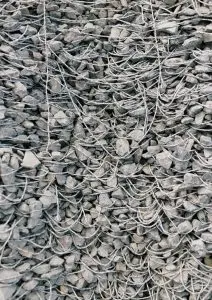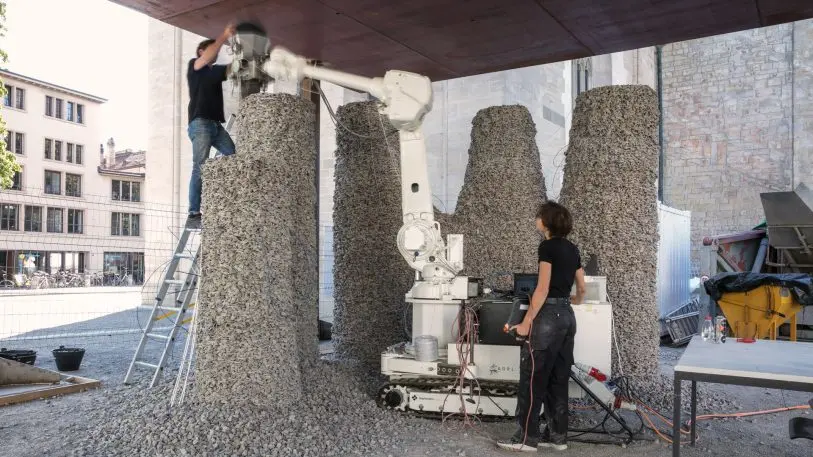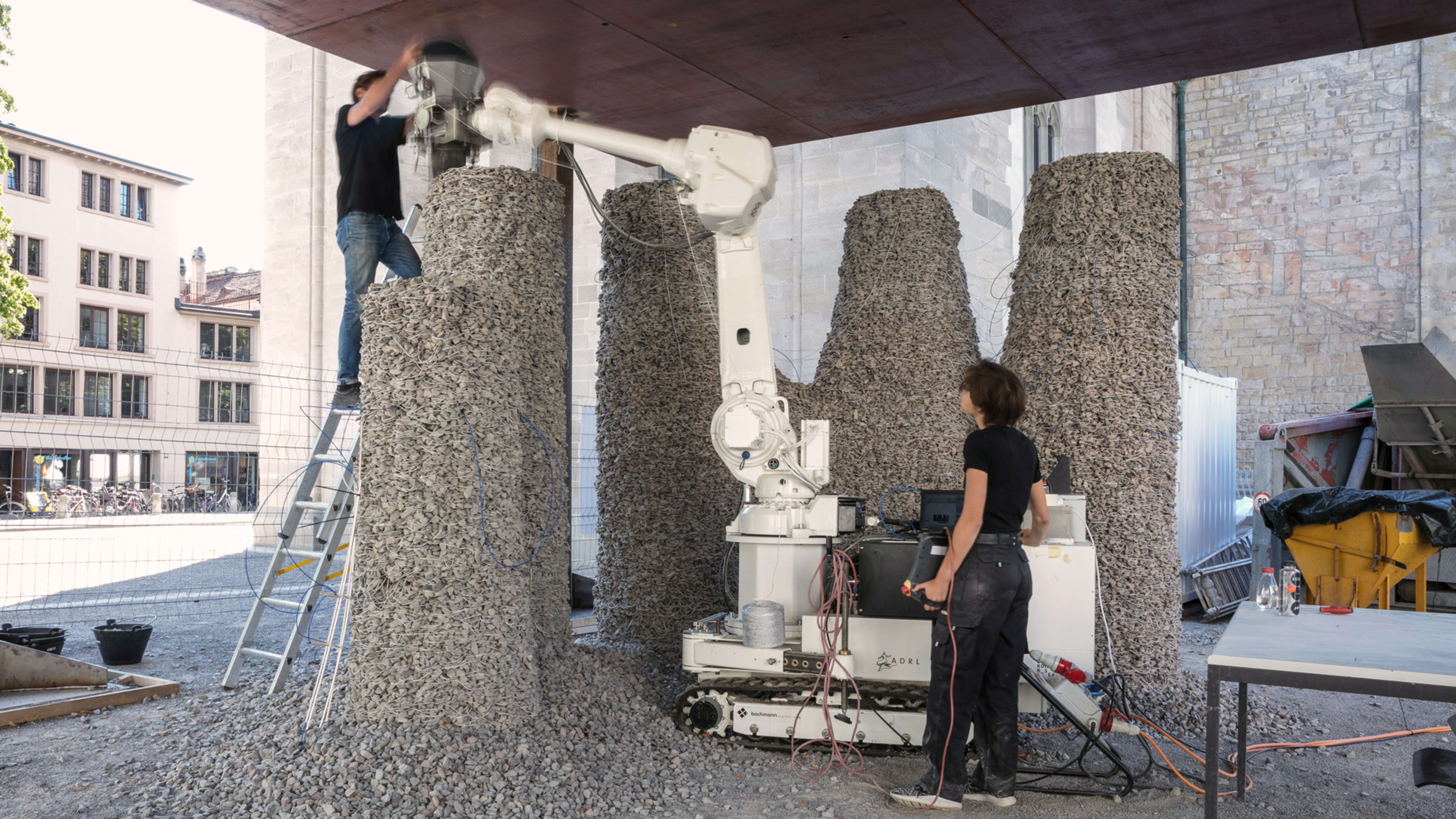Rising in front of a museum in the historical heart of the Swiss city of Winterthur sits one of the strangest structures ever built: the Rock Print Pavilion. At first sight, its columns look to be made of rough reinforced concrete–or perhaps the gabions so popular among architects today. In fact, it’s made out of tiny loose stones tied with string.

How is such a huge amount of tiny stones–none bigger than a fingernail–held together with no other cohesive material, like glue or cement? And how do the eight columns of loose pebbles hold up an eight-ton steel roof? The answer is in the specially-designed robotic arm–and a phenomenon known as “jamming.” As the research lab explains:
[Jamming] refers to aggregate granular materials, like gravel that is quite literally crammed together in such a way that it holds its form and shape like a solid. However, in contrast to prevailing research and applications of “jamming” that usually range from nano- to meso-scale, this project targets at the macro-scale and thus is suitable to architectural construction, bringing together computational design and simulation with automated fabrication technology.
More specifically, the robot–working over a four week period, in this case–places the stones so they interlock perfectly, adding a layer of string between each gravel level and tamping down to create a more stable structure. According to ETH, the bot used computer vision algorithms to calculate the safest way to lay down each column one layer at a time, creating a “stable, highly durable structure” capable of supporting the heavy steel roof.
“Right in the historic heart of the city, newly developed robotic processes combine these ordinary items into a highly resilient material system without the use of tools,” the research lab writes in a statement. “They thus provide a first look at some of the astonishing designs that rapid developments in digitalization are making possible in architecture and the environment.”

Recognize your brand’s excellence by applying to this year’s Brands That Matter Awards before the early-rate deadline, May 3.




